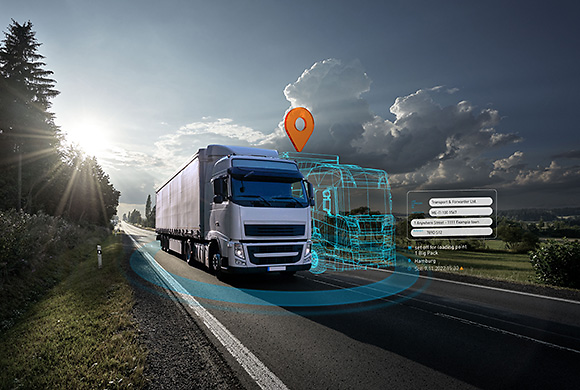Reassessing existing supply chains
Logistics on a short leash?

One of the most common side effects of the corona crisis is supply bottlenecks caused by interrupted supply chains. The economy across the world is connected by globalisation; raw material suppliers and production facilities for European products are often located in foreign countries. The extensive measures taken to curb the corona pandemic mean that many companies must face the challenge of reorganising how they do business at very short notice. All without losing sight of economic viability on the one hand and sustainability for after the crisis on the other. The current situation highlights those solutions that find a balance between the two.
The crisis has revealed the vulnerabilities in the added value chain. The dependence on demand, on suppliers and on external factors has proven to be a weakness, as has just-in-time production. One path to autonomy for companies and countries is to significantly shorten supply chains.
Production at location of demand
Self-sufficient production capabilities are essential for use as needed during a crisis, but right now these capabilities are very limited. The result is that every country in Europe is now facing bottlenecks for necessary products such as respiratory masks and medications. The products are mostly manufactured in China and India, and these countries also provide many of the raw materials. However, it can be difficult to get started with national or European production of these goods, due to a lack of transparency regarding raw material sources, making it hard to determine their specific point of origin and composition. Finding an adequate replacement close to home is a task requiring a great deal of time and money.
In order to react flexibly to interruptions, manufacturing companies need to build a broad network of suppliers. This network should include, in addition to raw material suppliers, companies from the transport and logistics industry. Ensuring these companies are located nearby improves reaction times as well as transparency within the value added chain, increasing consumer trust in the product. One method of creating a diversified manufacturing network of service providers is to use systems such as that offered by TIMOCOM. The system allows European manufacturing and commercial companies to meet and do business with one another. It is also possible to directly connect to transport and logistics companies via the system.
Due to stricter quality requirements and higher production costs than those in popular manufacturing countries such as China, India, Malaysia, etc., the price for many products will likely also increase significantly. This can only be countered by production of large quantities, as is required for respiratory masks and medications, and in general for daily necessities.
One task for risk management regarding similar future situations is therefore to precisely determine which groups of products are subject to higher demand during times of crisis. National or European manufacture will ultimately lead to the desired independence, but will require establishment of necessary infrastructure. In addition, expertise regarding raw materials and manufacturing processes will be brought back to the national and European stage.
Revolutionise warehouse use
When discussing large-scale production, the question becomes where to store raw materials on the one hand and finished products on the other. Doing so for an undetermined amount of time deviates from present norms and requires new processes. But implementing these processes will increase a businesses ability to react in times of need; sudden increases in demand can be met and product delivery can continue.
In order to be prepared for a sustained emergency situation such as the corona pandemic 2020, manufacturing companies need to create basic conditions that allow them to react to surplus production. Surpluses can then be produced based on the expected needs and would be available on demand in the required amounts.
Flexible infrastructure meets sustainability
Before taking the step of moving production to the location of the demand, companies need to examine how sustainable this option is. In light of COVID-19, only a few companies have the option of, for example, switching production from clothing to respiratory masks. And this switch must be able to be reversed just as quickly once the crisis is over, as demand will drop once more. Deploying the latest technology is absolutely imperative when building new manufacturing locations. The same is true for long-term changes made to existing manufacturing plants. Automation and digitalisation are the hallmarks of new technologies; they allow for flexible reactions to changing situations. This particularly applies during a crisis, but of course also to the modern world, in which consumer expectations for manufactured goods change at a rapid pace.
The production of goods relevant during a crisis can then become a company’s plan B. Unique selling points, such as biodegradability after use of the product in question, can positively influence the product’s market success. After all, increased awareness in the general population and industries as to the importance of protecting the environment and natural resources is the best incentive to manufacture sustainable products. Doing so, in turn, would justify higher prices to the consumer and increase attractiveness for regionally produced products.
Diversification is key
Moving manufacture of all goods directly to the sales market is not recommended for countries such as Germany, who rely on exports. On the one hand, other countries will follow their example, on the other hand their markets would hardly be competitive due to the increase in costs. In addition, the large number of smaller companies on the market would not be able to handle the financial burden over the long term. Therefore, risk management must clarify how important it is for the product group in question to establish independence from foreign countries.
In the end, it will be a combination of each of these aspects that prepares manufacturing companies for the future:
- a mix of regionally produced, globally produced and sustainable products
- raw materials sourced close to home
- use of modern technologies
- long-term storage of goods needed in a crisis
